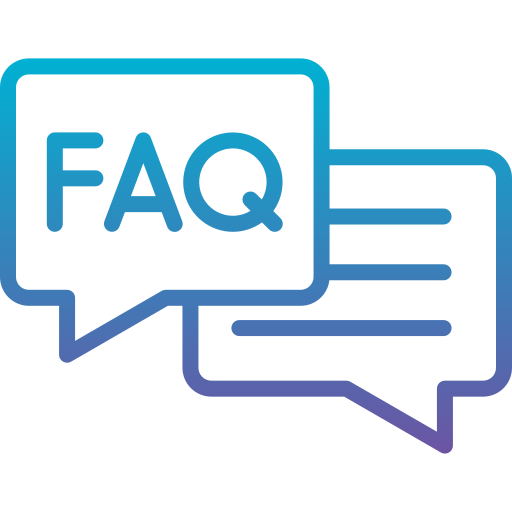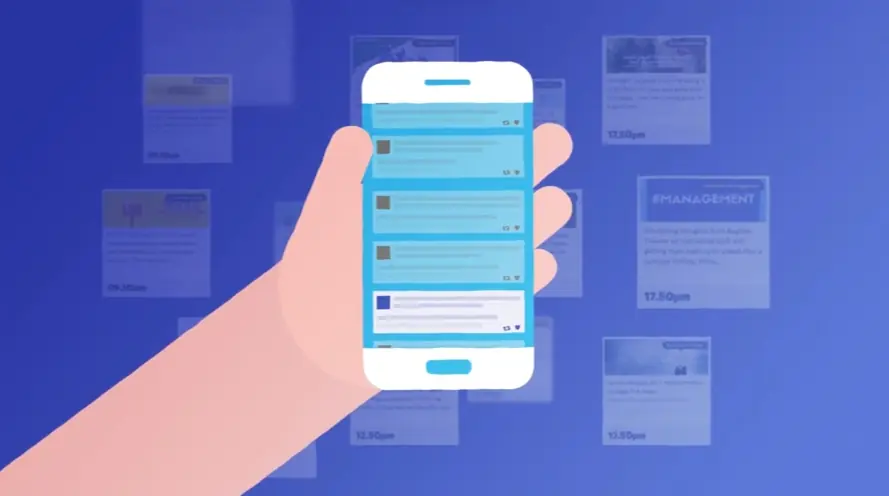
How do I craft a compelling app getting started video script?
Craft a compelling script by focusing on the app's core value and addressing user pain points. Highlight key benefits and demonstrate how the app solves problems, keeping it concise and engaging.
What visuals best showcase my app's core functionality in a new user walkthrough?
Showcase core functionality with clear visuals such as screen recordings, animated UI elements, and concise text overlays to guide users through key interactions.
How long should my mobile app introduction be to maximize user engagement?
Keep introductions brief, ideally under 60 seconds, to maintain user attention. Focus on the most important features and benefits to maximize engagement.
What are common pitfalls to avoid when creating an app onboarding tutorial?
Avoid overwhelming users with too much information at once. Structure the tutorial logically, focusing on essential features, using clear language, and providing opportunities for self-paced exploration.
How do I personalize the first-time user experience video for my app?
Personalize the first-time user experience by incorporating user names, preferences, or tailored content to make the video more relevant and engaging.
What are best practices for app feature explainer video UI design?
Explainer video UI design best practices include a clean, intuitive layout, clear visuals and legible fonts, and consistency with the app's overall aesthetic.
How can storytelling enhance an app welcome video?
Storytelling can make welcome videos more memorable by connecting with users emotionally. Showcase how the app improves their lives or solves their problems in a relatable way.
How do I make my initial app setup guide accessible?
Accessibility is crucial. Provide captions, transcripts, and alternative audio descriptions to ensure inclusivity for all users.
What tone and style should my app's new user walkthrough convey?
The tone should be friendly, welcoming, and encouraging. The style should be visually appealing and consistent with the app's branding.
How do successful apps use onboarding videos for user activation?
Onboarding videos drive user activation by showcasing key features, guiding users through the initial setup, and encouraging further exploration.
How can I leverage existing assets for my app getting started video?
Leverage existing assets like app screenshots, UI elements, and marketing materials to streamline production and maintain brand consistency.
How do I ensure brand consistency in my app's onboarding experience video?
Ensure brand consistency by using the app's logo, color palette, and typography in the video. Maintain a consistent tone and style that aligns with the brand's overall messaging.
What are current trends in producing effective app onboarding tutorials?
Current trends in app onboarding tutorials include interactive elements, personalized content, and microlearning modules. Keep videos concise, engaging, and user-focused.
How can animation improve a mobile app introduction video?
Animation can make introductions more dynamic and visually appealing. Use animation to highlight key features, demonstrate interactions, and create a more engaging experience.
Should I include customer testimonials in my app's first-time user experience video?
Customer testimonials can build trust and credibility. Include short, impactful testimonials from satisfied users to showcase the app's value. Typical pricing for a 60-second video ranges from $1000-$6000, depending on complexity, and turnaround time is generally 3-8 weeks.
How to plan and optimize App Getting Started Videos?
Emotional Resonance: "People will forget what you said, people will forget what you did, but people will never forget how you made them feel." - Maya Angelou, Author and Poet. Advids applied this wisdom for a healthcare client. We created an app getting started video highlighting patient testimonials and emphasizing the app's positive impact on their lives. This emotional approach fostered trust and increased app downloads by 25%.
Actionable: Connect with your audience by evoking genuine emotion.
Clear Communication: "The single biggest problem in communication is the illusion that it has taken place." - George Bernard Shaw, Playwright. Advids addressed this challenge for an e-commerce client. We developed an app getting started video that concisely explained the app's key features and benefits, using clear language and avoiding jargon. This resulted in a 15% increase in user engagement and a noticeable reduction in cart abandonment rates.
Actionable: Ensure clarity by using concise language and avoiding jargon.
Value Proposition: "Price is what you pay. Value is what you get." - Warren Buffett, Investor. Advids leveraged this principle for a productivity app client. We created an app getting started video showcasing the app's unique value proposition and how it solves specific user pain points. This resulted in a 20% increase in paid subscriptions, demonstrating the video's effectiveness in communicating the app's worth.
Actionable: Highlight value by showcasing how your app solves user problems.
Visual Storytelling: "Show, don't tell." - Anton Chekhov, Playwright. Advids applied this maxim for a travel app client. We created an app getting started video that visually demonstrated the app's features in action, using engaging visuals and minimal narration. This immersive approach led to a 30% increase in app usage and positive user reviews.
Actionable: Engage viewers by visually demonstrating your app's functionality.
Call to Action: "The purpose of marketing is to know and understand the customer so well the product or service fits him and sells itself." - Peter Drucker, Management Consultant. Advids implemented this for a gaming app client. We created an app getting started video with a clear call to action, encouraging viewers to download the app and start playing. This resulted in a 25% increase in app installs and a significant boost in daily active users.
Actionable: Drive conversions by incorporating a clear and compelling call to action.
How app getting started video examples is curated?
We dove deep into app getting started videos, curating an insightful resource guided by an 8-parameter framework:
Our 8-Parameter Curation Framework
1.Relevance Authentic app getting started videos showcasing real-world applications.
2.Diversity Showcasing diverse visual styles, industries, and target audiences for inspiration.
3.Engagement Analyzing audience response, information design, 10-second litmus test.
4.Visual Design Evaluating aesthetics, clarity, effectiveness of visuals.
5.Narrative Structure Assessing storyline clarity, flow, message effectiveness.
6.Call to Action Examining call to action strength, clarity, and effectiveness in driving app downloads or initial usage.
7.Brand Alignment Determining video alignment with brand message, identity, and app's core functionality.
8.Performance Metrics Utilising VidIQ to assess watch time, audience retention.
A team of video designers, video marketers, and digital content experts collaborated with lead editor Orko to ensure diverse, adaptable examples, moving beyond the repetitive.
Updated October 15th, 2024, this collection is constantly refreshed with new examples meeting high standards, featuring styles like:
1. Animated Explainers
2. Product Demos
3. Customer Onboarding
4. Technical Walkthroughs
5. UI Demo Animations
0.21% of videos are featured in this blog. With only 3.5% videos meeting the visual design parameter.
Advids
Source: Advids/Youtube, app getting started video examples 2024, n=14500 videos within duration <3 mintues, across industries.
Creating Accessible App Videos for All Users
Creating videos accessible to all users expands our app's reach and demonstrates our commitment to inclusivity. We want everyone to experience our app's potential, regardless of their abilities.
Accessibility isn't just a checklist; it's about creating a positive user experience for everyone. Consider users with visual impairments. Audio descriptions bring your app to life, narrating the visuals for those who can't see them. Clear visuals, legible fonts, and a colorblind-friendly palette benefit everyone, not just users with specific needs. app launch video examples often demonstrate this inclusive design approach.
For users who are deaf or hard of hearing, captions and transcripts are essential. These features not only make your content understandable but also allow users to engage at their own pace. Imagine watching an Application Tutorial Video without captions – how much would you miss? Similarly, sign language interpretation in an inset further enhances accessibility for deaf users.
Think about cognitive accessibility too. Concise language, paired with strong visual cues, makes your videos easier to understand for everyone, especially those with cognitive disabilities. Mobile app explainer video examples often excel at this, delivering information quickly and clearly. And don't forget keyboard navigation, which allows users who can't use a mouse to control the video player. An accessible app walkthrough Video empowers all users to explore the app's features independently.
By focusing on these key areas, we create app getting started videos that truly welcome everyone. We empower every user to learn, engage, and experience the full potential of our app.
The Importance of a Strong Call to Action in App Videos
Creating a compelling app getting started video involves more than just showcasing features; it's about guiding users towards action. We've discussed various elements, but let's focus on a crucial component: the Call to Action (CTA). A strong CTA transforms passive viewers into active users, bridging the gap between interest and engagement. Think of best app intro video examples – a visually appealing video is great, but without a clear CTA, potential users might not take the next step.
A well-crafted CTA is the final piece of the puzzle. It's the signpost directing users towards the desired destination, whether it's downloading the app, visiting our website, or learning more. This is where we turn interest into action, maximizing the impact of our app introduction video.
- Strategic placement matters. While ending with a "Download Now" button is effective, as seen in app onboarding video examples, consider interactive elements throughout. Allowing users to "Learn More" about specific features keeps them engaged.
- Clarity is key. Use concise, action-oriented language. Instead of "Click Here," opt for " Start Your Free Trial " or " Get the App Today ." app feature video examples often excel at this.
- Testing is crucial. A/B test different CTAs to find what resonates. Experiment with wording, colors, and placement. analyze click-through rates to optimize for conversions.
- Incentivize action. A limited-time discount or exclusive content can be a powerful motivator, especially in app onboarding video examples.
A strong CTA isn't just a button; it's a strategic element that guides users through the user journey. By focusing on clear, compelling CTAs, we ensure our app getting started videos effectively convert viewers into engaged users.
Choosing the Right Animation Style for Your App Video
Creating compelling app videos can be tough. One of the biggest challenges is choosing the right animation style. The right animation can transform a simple screen recording into a captivating story, boosting user engagement and driving conversions. Let's explore how to find the perfect animation style for your app.
Think about your target audience. A younger audience might respond well to vibrant, playful animation, while a professional audience might prefer a more sophisticated style. Also, consider your brand personality. Your animation should reflect your brand's identity, whether it's playful, professional, or innovative. Looking for inspiration? Check out these software App Demo Video examples to see how animation brings app features to life.
Effective app video examples often showcase a perfect blend of animation and live-action footage. A well-crafted Mobile App Tutorial Video uses animation to guide users through complex processes, making learning easy and enjoyable. Remember, the goal is to enhance understanding, not distract from your message.
- Explore different animation styles. From 2D and 3D animation to whiteboard and motion graphics, each style offers a unique way to present your app. Experiment to find what works best for your brand and message.
- Match animation to app complexity . Simple apps may benefit from minimalist animation, while complex apps may require more detailed visuals to explain functionality effectively.
- Set a realistic budget. Different animation styles have varying production costs. Choose a style that aligns with your budget and resources.
- Test and iterate. Gather feedback from your target audience and refine your animation based on their responses. Continuous improvement is key to creating truly engaging app videos.
By carefully considering these factors, we can create app getting started videos that not only inform but also captivate our audience. Remember, the right animation style can make all the difference in effectively communicating your app's value and driving user engagement.
Showcasing Key Features in Your App Getting Started Video
Let's talk about showcasing your app's best features in your getting started video. This is where we move beyond the basics and create a truly engaging user experience. Think of it as a guided tour, highlighting what makes your app special and why users will love it. A well-crafted video can transform passive viewers into active users.
We want to create a video that not only informs but also inspires action. Remember, we're not just listing features; we're telling a story. A story about how our app solves problems, improves lives, and empowers users. Let's explore how to make that story compelling.
- Start by highlighting your app's core Value Proposition . What unique problem does it solve? This is your hook. Make it clear and concise, like in First-Time User App Video examples.
- Guide users step by step through key tasks. Think smooth transitions and intuitive design, much like in app walkthrough video examples. Clarity is key.
- Show your app in action within realistic scenarios. Make it relatable and practical for potential users. For example, Software Onboarding Video might showcase how a team uses the app for project management.
- Use animation strategically to clarify complex processes and improve engagement, as seen in engaging app video examples. Animation can bring your app to life and make learning fun.
By focusing on these key elements, we can create app getting started videos that not only inform but also inspire action. We're not just showcasing features; we're creating an experience that resonates with users and drives conversions.
Optimizing App Videos for Different Platforms
Let's talk about optimizing our app videos for different platforms. It's like tailoring a suit – what fits perfectly on YouTube might look awkward on TikTok. We want our videos to shine everywhere, grabbing attention and driving conversions. Creating platform-optimized app videos requires understanding each platform's nuances. We'll explore key strategies to maximize user engagement and drive conversions across different platforms. Analyzing top app getting started videos reveals a clear trend: platform optimization is key.
Think about it. A snappy, vertical video might be perfect for Instagram Stories, but it would get lost on YouTube, where users expect a more immersive experience. Similarly, a detailed App Demo Video might thrive on YouTube but feel too long for TikTok. It's all about adapting our approach to fit the platform and its audience. For instance, app tutorial video examples often demonstrate how platform-specific features can enhance user experience.
- Tailor video length to each platform. Shorter, impactful videos often perform better on social media platforms like TikTok and Instagram, while longer formats are suitable for YouTube or educational platforms.
- Optimize thumbnails for maximum click-through rates. A compelling thumbnail is the first impression, so make it count. A/B test different thumbnails to see what resonates with your target audience on each platform.
- customize calls to action . A "Swipe Up" might work on Instagram Stories, while a "Download Now" button is better for YouTube. A well-crafted App Explainer Video designed for YouTube might benefit from a longer format and detailed explanations.
- Consider accessibility. Always include captions and subtitles for viewers watching without sound, regardless of the platform.
By tailoring our approach to each platform, we can ensure our app videos reach the right audience with the right message, maximizing engagement and driving conversions.
Author & Editor Bio
A video producer with a passion for creating compelling video narratives, Jai Ghosh brings a wealth of experience to his role. His background in Digital Journalism and over 11 years of freelance media consulting inform his approach to video production. For the past 7 years, he has been a vital part of the Advids team, honing his expertise in video content planning, creation, and strategy.
His collaborative approach ensures that he works closely with clients, from startups to enterprises, to understand their communication goals and deliver impactful video solutions. He thrives on transforming ideas into engaging videos, whether it's a product demo, an educational explainer, or a brand story.
An avid reader of modern marketing literature, he keeps his knowledge current. Among his favorite reads from 2024 are "Balls Out Marketing" by Peter Roesler, "Give to Grow" by Mo Bunnell and "For the Culture" by Marcus Collins. His results-driven approach ensures that video content resonates with audiences and helps businesses flourish.


